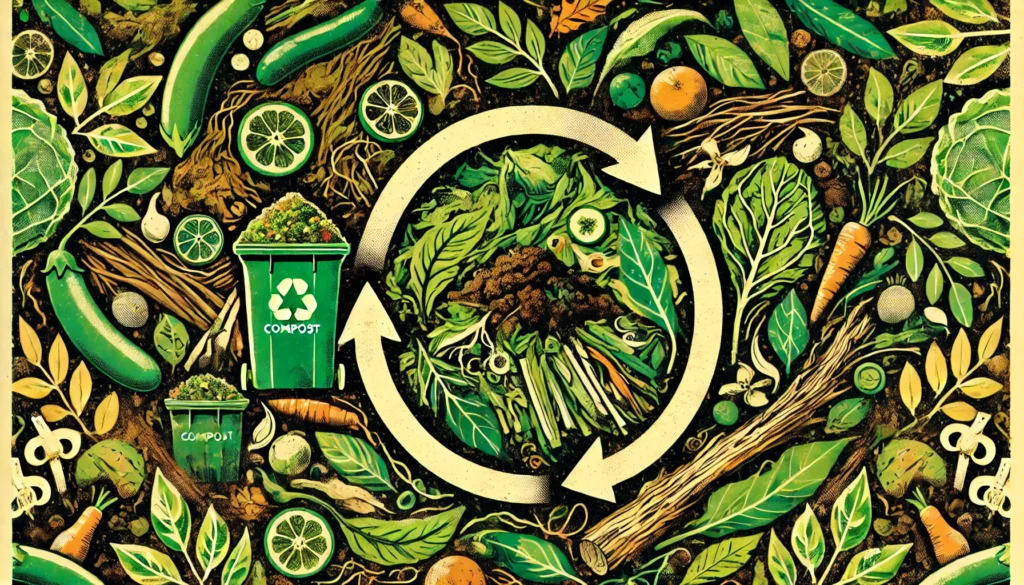22.06.2024 | Grondrecht
Eindrapport ‘Onderzoek PFAS in gft- en groenafval Zwijndrecht’
Is er een risico op PFAS-verspreiding door gft- en groenafval dat wordt opgehaald door de afvalbeheerder of wordt binnengebracht bij het containerpark? Dat vroeg het gemeentebestuur van Zwijndrecht zich af. De OVAM deed een verkennend onderzoek op basis van stalen in de gemeente in 2021 en 2022.
In juli 2021 werd groencompost geproduceerd uit groenafval van het werkingsgebied van IBOGEM onderzocht op de aanwezigheid van PFAS. Drie afzonderlijke batches groencompost werden bemonsterd en afzonderlijk geanalyseerd. De totale concentratie van alle meetbare PFAS bedroeg respectievelijk 4,22, 0,97 en 3,52 μg/kg droge stof (DS).
Opvallend is dat, net als bij het onderzochte gft- en groenafval, ook in de groencompost PFBA, PFBS en PFOS licht boven de rapporteergrens werden gemeten. De concentraties waren lager door de gezamenlijke verwerking van groenafvalstromen uit andere gebieden.
In de gft-compost van de installatie die het gft-afval van het werkingsgebied van IBOGEM verwerkte, werden in drie afzonderlijke batches zeer lage concentraties van totale PFAS gemeten, namelijk respectievelijk 0,52, 0,61 en 0,59 μg/kg DS. In 8 van de 9 bepalingen van PFBA, PFBS en PFOS lagen de waarden onder de rapporteergrens van 0,5 μg/kg DS.
De analyseresultaten van het gft- en groenafval wijzen op een overschrijding van de toetsingswaarde voor PFAS in bodemverbeterende middelen. De aangetroffen PFAS-verbindingen zijn ook terug te vinden in andere milieucompartimenten binnen het onderzoeksgebied, zoals lucht, bodem en grondwater. Hoewel het moeilijk is om in dit verkennende onderzoek een directe relatie aan te tonen tussen de concentraties in het afval en die in de verschillende milieucompartimenten, wordt de route via neervallend stof beschouwd als een aannemelijk transferpad dat verder onderzocht moet worden.
Zolang de vegetatie in het onderzoeksgebied wordt blootgesteld aan instroom van PFAS-verbindingen, blijft de vegetatie belast met deze concentraties. Dit brengt het risico met zich mee dat afval met te hoge PFAS-concentraties via het verwerkingscircuit verder wordt verspreid naar andere gebieden. Daarom is het noodzakelijk om de PFAS-concentraties in het groenafval periodiek te monitoren, vooral gezien de verwachte positieve effecten van de sanering van de vervuilingsbronnen in de omgeving van het onderzoeksgebied.
Sinds 1 juli 2022 geldt er een tijdelijk handelingskader voor het gebruik van afvalstoffen als bodemverbeterend middel. Dit kader hanteert een toetsingswaarde van 15 μg/kg DS voor PFAS-20, waarmee organisch-biologisch afval, zoals gft- en groenafval, kan worden afgevoerd naar compostering. Het onderzoek toont aan dat er binnen een straal van 1 km rond 3M een risico bestaat op overschrijding van deze waarde in groenafval. Mogelijk kunnen de saneringsmaatregelen, die sinds de herfst van 2022 zijn ingevoerd, leiden tot een verlaging van de PFAS-20-concentraties in het groenafval. Daarnaast biedt de sanering de kans om de “no regret”-maatregelen te evalueren die momenteel gelden voor het beheer van gft- en groenafval in de regio Zwijndrecht.
Het lokale bestuur en de aangestelde afvalbeheerder hebben de verantwoordelijkheid om het selectief ingezamelde huishoudelijke afval, zoals groenafval, te beheren in overeenstemming met de milieuverantwoordelijke randvoorwaarden. Concreet moet op basis van regelmatige analyses van het groenafval, ingezameld binnen de 1 km perimeter rond 3M, worden aangetoond dat het groenafval voldoet aan de toetsingswaarde van 15 μg/kg DS voordat het kan worden aangeboden voor compostering.



